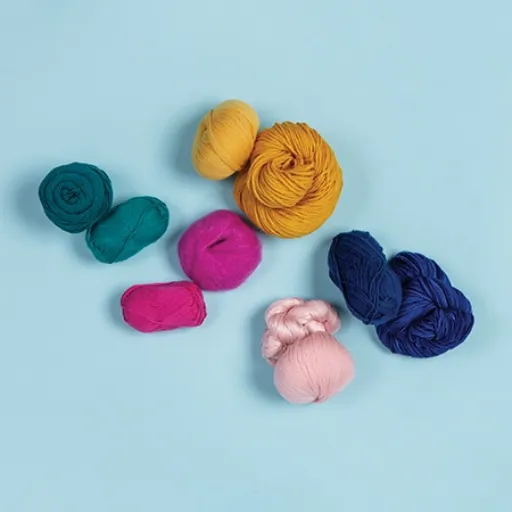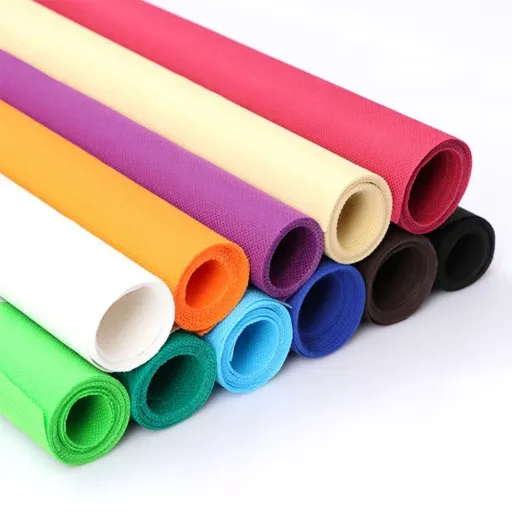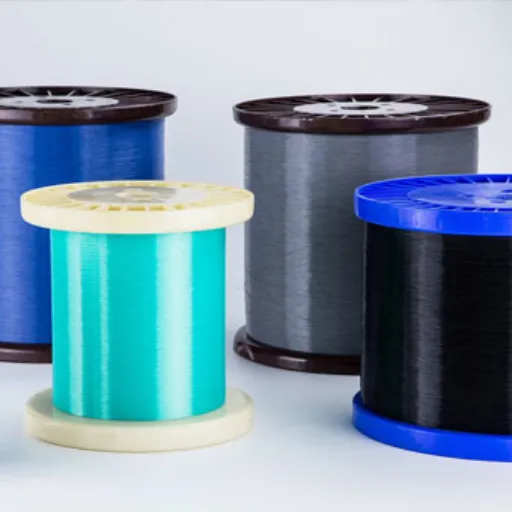The viscose fiber is regarded as one of the most fascinating innovations in the textile industry, where the natural attraction of plant-based materials gets mixed with versatility offered by synthetic methods. A semi-synthetic fiber that entered fashioning textiles, home furnishings, and industrial applications because of the silky texture, breathability, and low price of the fiber. But how is this much-talked-about fabric produced? Manufacturing viscose rayon involves an exquisite combination of science and art-from extracting cellulose to the various chemical treatments that convert it into soft and lustrous fibers. This article will give you a good understanding of what goes into the making of viscose fabric and fiber by describing the stages of production and touching upon environmental issues and the importance of the industry. The story of this beautiful fabric will be an interesting one for a textile enthusiast, a designer, or generally, someone who is curious about materials.
Introduction to Viscose
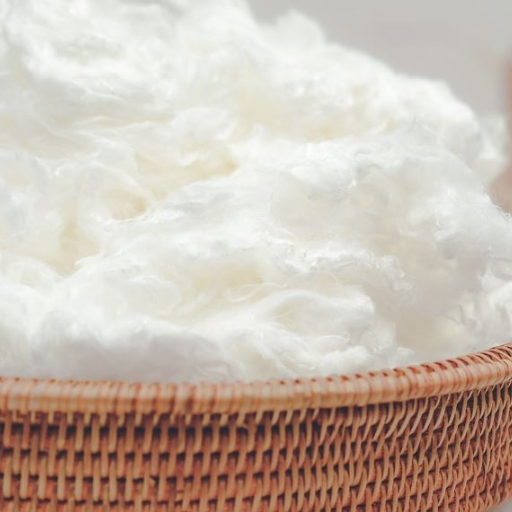
What is Viscose?
Viscose is a kind of semi-synthetic fiber derived from natural cellulose, usually coming from wood pulp. Its characteristically soft feel, breathability, and versatility make it an elite textile fabric. The making process involves controlling the natural cellulose through chemicals to form a fiber that mimics natural properties like cotton or silk.
Perhaps, the main trait of viscose is its ability to absorb moisture, rendering it apt for human clothing. From its weight and comfort dimension, one can call it a lightweight fiber used to make dresses, shirts, linings, and activewear. The fiber is overwhelmingly blended with others to impart good texture and strength while maintaining its smooth finish.
Viscose manufacturing is an environmental concern amid widespread use. The chemicals used in the production process could be harmful if misused, and water and energy consumption are quite high. But innovations are going on to develop sustainable alternatives and improve the method so they can be less damaging. In all respect, due to its cheapness, versatility, and very natural feel, viscose finds a pretty good name in the textile industry.
Historical Overview of Viscose Rayon
Viscose rayon is a semi-synthetic fiber, created back in the late 19th century as silk substitution. The fiber’s beginning can be taken back in 1884 when French chemists Hilaire de Chardonnet and Louis Vavasseur found a way of making cellulose-based artificial silk. The English chemists Charles Frederick Cross, Edward John Bevan, and Clayton Beadle in 1891 took the invention further to refine the process to what is today known as viscose rayon. The fiber was patented in 1892 and soon gained commercial importance.
Key Timeline
- 1884: Artificial silk discovery
- 1891: Process refinement
- 1892: Patent granted
- Early 1900s: Commercial expansion
By the early 20th century, viscose rayon experienced a rapid industrial expansion, chiefly due to its cheapness and versatility. Nature silk, for instance, was much pricier, whereas viscose rayon came on the market as a cheap option, essentially the best alternative for softness and luster. With this, the textile and fashion brands paved the way for mass production of agency textile manufacturing-type viscose garments, curtains, and various items-whether on hand, luxurious, yet within reach of an ordinary consumer. These fibers helped in democratizing high-quality textiles.
With all these achievements behind it, the environmental and health snafus concerning its manufacturing methods shadow the history of viscose rayons. The usage of compounds such as carbon disulfide and caustic soda turned the whole thing into a big safety and environmental dilemma. However, through time and the need to curb such impacts, modern methods and a push for sustainable ways of manufacturing viscose came into existence. Of course, the fiber is a pivot in textile history and goes on to shape many industries across the globe.
Importance of Viscose in Textiles
For its versatility, low cost, and aesthetic consideration, viscose gained eminent status in the textile industry. Being able to imitate the luxurious properties of natural fibers such as silk, cotton, and wool, it is held in great esteem by both producers and consumers. The fiber, endowed with soft feel, vapor transmission, and being lightweight in weight, finds application in the manufacture of comfortable clothing such as dresses, blouses, linings, and activewear.
Applications of Viscose
Besides clothing, viscose enjoys substantial use in the production of home textiles such as curtains, upholstery, and bedding materials. The smooth and glossy finishing of these products boosts their aesthetics, while viscose, being moisture-absorbent from this perspective, makes these products good to the touch and very suitable for usage. This functional duality has assured the usage of viscose for many decades in both the fashion and interior design industries.
These sustainability challenges have led to innovations aimed at creating more environmentally friendly processes. The manufacturers now tend to implement more closed-loop systems and source wood pulp under conditions of environmental responsibility. Hence, these developments serve to address environment concerns while reinforcing the continuing viability of viscose as a sustainable alternative for the future of textiles.
Raw Materials Used in the Manufacturing Process
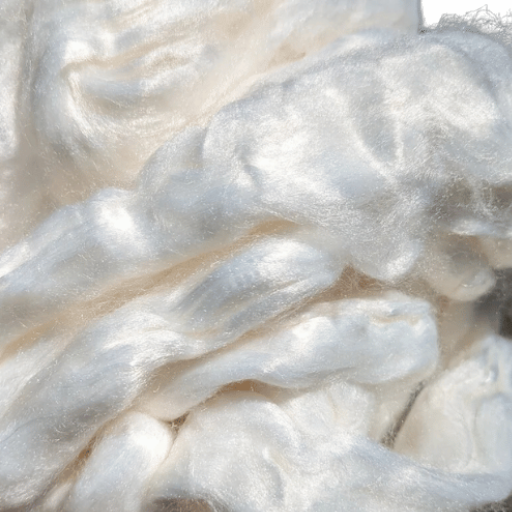
Natural Materials Sourced for Viscose Production
The cellulose, which is the major raw material for the production of viscose, is obtained from natural sources such as wood pulp, bamboo, or cotton linters. The said materials are chosen due to their high cellulose content that makes them fit to undergo particular chemical processes required for fiber formation. Of these, wood pulp is the majorly utilized and is usually sourced from fast-growing softwood trees of spruce, pine, or eucalyptus variety.
| Raw Material | Source | Advantages |
|---|---|---|
| Wood Pulp | Spruce, Pine, Eucalyptus | High cellulose content, fast-growing |
| Bamboo | Bamboo plants | Quick growth, minimal water, no pesticides |
| Cotton Linters | Cotton seed by-product | Waste reduction, resource conservation |
The sourcing for these natural materials is going increasingly toward sustainability. Many manufacturers are adopting a policy to ensure that wood pulp used in viscose production comes from forests under responsible management, which conform to some sort of environmental certification. This certification process aims to reduce deforestation and conserve biodiversity in response to environmental concerns over resource extraction. Likewise, due to its quick growth requiring little care, water, or pesticides, bamboo has come forward as the much-desired sustainable counterpart to the classic wood source.
Cotton linters are short fibers that remain on cotton seeds after they go through ginning. They can be utilized as another renewable source of cellulose for making viscose. In this way, manufacturers help reduce-waste and save resources by using by-products of cotton production. These different types of natural materials bring into focus the need to balance industry with ecological consciousness and bearing on which viscose ought to be considered a viable and responsible textile option if sourced and produced ethically.
Comparison with Polyester and Other Fibers
Viscose Advantages
- ✓ Biodegradable material
- ✓ Soft, silky texture
- ✓ Excellent breathability
- ✓ Mimics natural fibers
Polyester Characteristics
- × Petroleum-based synthetic
- ✓ High durability
- ✓ Wrinkle-resistant
- × Microplastic pollution
One of the main differences one can note when comparing viscose with polyester relates to the source of these materials. Being produced from natural cellulose, viscose offers a better choice to degrade biologically as compared to polyester, which was synthesized from petroleum chemicals. Thus, in the bigger picture, when sustainably produced, viscose stands out as an eco-friendly choice much unlike polyester, which contributes heavily to microplastic pollution, and takes several hundred years to break down.
The other major point of reference relates to how these two differ in their feel and breathe-ability. Viscose has earned a reputation for feeling soft and silky and having the ability to emulate the lofty characteristics of natural fabrics like silk or cotton. Being very breathable, it also works well to keep you comfortable in warm environments. Polyester, however, is formed to be less breathable, and, apart from being less forgiving to one’s touch, is considered to hold the qualities of being quite durable, wrinkle-resistant, and fast-drying.
Whatever fiber is considered, the sustainability of a fiber and the environment it affects are largely dependent on production and post-use considerations. Viscose might have been considered an eco-choice, if sourced from responsibly managed forests and if chemical waste was practically non-existent in its processing, while its production involves harmful practices some of the time. When compared to other pollutants, polyester harms the environment and is fabricated; it is, however, durable and, therefore, recyclable and does not require constant replacement. Both fibers mean something good and bad, and the selection between the two should depend on the end use and environmental humility of the user.
Quality Factors of Raw Materials
From the raw materials point of quality, the very weighting factors are durability, environment, and usability. Durability of a raw material assures the keeping up of its grandeur, thereby limiting the need for its frequent replacement, and rendering it in this way to greener practices. Natural fibers give an example: cotton and wool produce comfort and are permeable to air, and also they get their varying durability during processing and treatment. Meanwhile, on the other hand, the synthetic fibers are almost more durable but environmentally unpalatable.
Lifecycle impact must stand in direct relation to quality evaluation. Initially considered are inputs of energy, resources, and processes. Finally, environmental merits are measured: biodegradability or recyclability. Often, natural fibers have been ranked higher in terms of environmental friendliness in the early stages of the life cycle. This perception can, however, change with considerations such as water consumption and pesticide use. Synthetic fibers involve limited agricultural inputs but pose, from the microplastic perspective, questions about long-term sustainability.
Lastly, usability is paramount to how a material is performing in its application. Factors influencing consumer choice-and unquestionably influencing suitability for specific uses-are texture, weight, and ease of maintenance. Therefore, one must check the merits of natural and synthetic fibers, practicing a balance of quality issues coupled with environmental and practical concerns rooted in needs.
The Manufacturing Process of Viscose Rayon
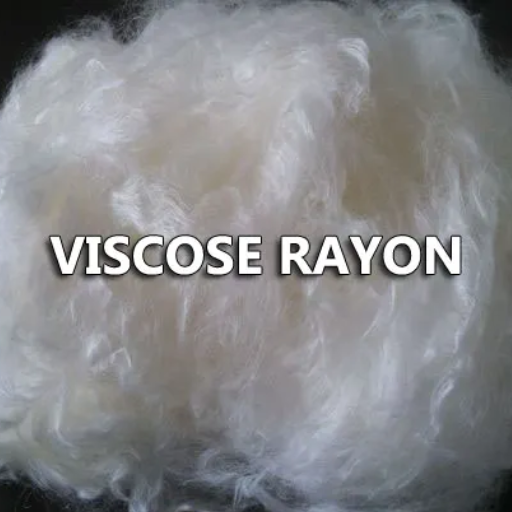
Steps in the Viscose Fiber Manufacture Process
Preparation of Cellulose
Starting with raw cellulose, usually from wood pulp or cotton linters, the cellulose is treated with caustic soda to form alkali cellulose and aged to obtain the desired properties. This step makes the material ready for further chemical processing.
Xanthation
The next step is reacting alkali cellulose with carbon disulfide to form cellulose xanthate. This compound is then dissolved in a dilute alkali solution to produce a viscous liquid: viscose. This is a very important step in that it converts solid cellulose into a liquid form that can be spun.
Spinning of Viscose
The viscose solution is extruded through spinnerets (small holes) into a coagulating bath. This bath usually contains acid and salts that reproduct viscose into solid filaments of cellulose, forming rayon fibers as we know it.
The various steps show a major shift from natural cellulose to viscose fiber through a series of chemical and mechanical processes. This balancing act ensures that the fiber is versatile, holding comfort and common usages in textiles.
Chemical Reactions Involved in Rayon Production
In the manufacture of rayon, major chemical reactions take place to convert natural cellulose into viscose fibers. The process begins with treating cellulose, obtained usually from wood pulp or cotton, with sodium hydroxide; this forms alkali cellulose. The reaction prepares the structure of cellulose for further transformations.
Key Chemical Reactions
Step 1: Alkalization
Cellulose + NaOH → Alkali Cellulose
Step 2: Xanthation
Alkali Cellulose + CS₂ → Cellulose Xanthate
Step 3: Regeneration
Xanthate + H₂SO₄ → Cellulose (Rayon)
The next step involves the alkali cellulose being oxidized by carbon disulfide to prepare it for the viscose treatment; cellulose xanthate is thus obtained. This intermediate is formed as it renders the cellulose soluble into a viscose solution and is therefore an essential step. The viscose solution is then used as the precursor of fiber formation.
Finally, the viscose solution is extruded into a coagulation bath consisting of sulfuric acid (H₂SO₄) and salts for regeneration. Cellulose xanthate gets decomposed in this bath, and pure cellulose filaments regroup, turning solid into rayon fiber. The above chemical reactions ensure that natural cellulose gets sufficient transformation into a versatile fiber much in demand in the textile world.
Machinery and Equipment Required
Numerous machines and equipment are required for rayon production so that chemical and mechanical processes may be performed efficiently. First of all, we have digesters and shredders, which convert the natural cellulose into a smaller form to ease its chemical treatment. These machines break down wood pulp or cotton linters into smaller workable sizes to allow uniform absorption of chemicals during steeping.
| Equipment Category | Specific Machines | Function |
|---|---|---|
| Preparation | Digesters, Shredders | Convert cellulose to smaller form |
| Chemical Treatment | Mixers, Reaction Tanks | Alkalization and xanthation processes |
| Fiber Formation | Spinnerets, Extrusion Machines | Convert viscose to fiber |
| Finishing | Drying, Winding Machines | Complete fiber formation |
| Supporting | Filtration Systems, Pumps | Maintain purity and chemical balance |
Then come chemical treatment equipment, namely: mixers and reaction tanks for carrying out the stages of steeping, alkalization, and xanthation. These vessels are supposed to resist chemical reactions and provide even stirring of the cellulose with sodium hydroxide and carbon disulfide to produce cellulose xanthate (viscose solution). Proper temperature and pressure controls must be maintained at this stage for the best quality of the viscose.
Now we need spinning and extrusion machines to convert the viscose solution into fiber for rayon. The solution is extruded through spinnerets into a coagulation bath for regeneration of cellulose fibers, and in conjunction drying and winding machines would complete the formation of fibers into usable yarn or thread. Then there are other supporting equipment, such as filtration systems and pumps that are indispensable throughout the entire process to maintain material purity and precise chemical balances.
Physical and Chemical Properties of Viscose Fibers
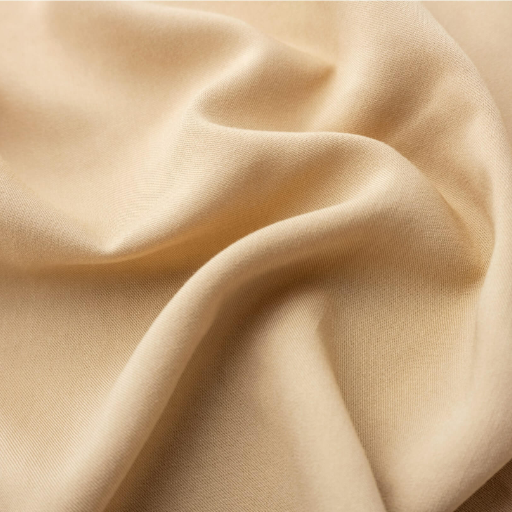
Physical Properties of Viscose Rayon
Viscose rayon is an industrially attractive fiber due to certain physical properties it exhibits. A smooth texture and a great hand feel make it comfortable to wear and suitable for the manufacture of apparel and other textiles. The fiber is highly absorbent: it can hold moisture, which makes it good for dyeing, with deep and bright colors being obtained in the final products.
Texture & Feel
Smooth texture, comfortable wear, great hand feel
Absorption
Highly absorbent, excellent for dyeing, deep colors
Breathability
Good air circulation, ideal for warm weather
Appearance
Elegant drape, silk-like shine, fine look
Soft though it is, viscose rayon has a moderate strength and durability. This strength diminishes when the fiber is wet, so it becomes very unstable when subjected to too much moisture and being repeatedly washed. This means that care becomes a factor in its handling while laundering, because, if not properly taken care of, it may end up being degraded with time.
The other characteristic that sets viscose rayon apart from other fibers is good breathability; it permits a lot of air circulation compared with many synthetic fibers. Hence, it is good for warm weather clothing or for any kind of garment needing ventilation. The drape and shine of it give a fine, elegant look that normally simulates some past rival of silk. This makes it highly attractive for fashion and interior design.
Chemical Properties and Their Implications
Viscose rayon displays some chemical peculiarities that determine its performance and application. Cellulose being its main component, it is similar to natural fibers such as cotton but has undergone excessive chemical treatment. Hence, it is a semichemically treated fiber bearing the features of natural fibers with extra versatility. This characteristic makes viscose rayon very absorbent, dyeing well with bright colors which are permanent on the fabric. On the other hand, being highly absorbent, it loses strength when wet, thus reducing its durability in damp conditions.
Chemical Sensitivity Guide
⚠️ Alkaline Substances
Can cause swelling and weakness
⚠️ Acids
Attack cellulose structure
⚠️ High Temperature
Can scorch or deform fiber
One of the foremost features of viscose rayon is its destructibility when exposed to chemical agents. Alkaline substances tend to swell or weaken its fibers. Acids, in contrast, attack the cellulose, thus posing a threat to the structural integrity. Therefore, such activities as dropping by and washing of any viscose rayon garment must be carried out with caution. Being a cellulosic fiber, itself, viscose rayon can naturally decompose over time when exposed to suitable environmental conditions; thus, compared to many synthetic fibers, these processes reduce the unloading of burden on the environment.
Finally, the key to the output lies in recognizing the temperature-sensitive nature of the material. Being temperature-sensitive, viscose rayon can scorch or deform under very high temperatures, calling for gentle laundering or ironing consideration. In spite of these sensitivities, chemically, it stands for maximum comfort, breathability, and aesthetic appeal, giving the product an advantageous position in the textile industry. When both ends of chemical points are considered, it can aid manufacturers and consumers in making an informed decision on its use and care systems.
Quality of Viscose Rayon Fabrics
Viscose rayon fabrics are valued for their soft texture, smooth finish, and elegant draping quality. Their unique blend of synthetic and natural fibers provides a luxurious look and feel that is often compared to silk. The versatile nature of viscose makes it a popular choice for manufacturing garments, upholstery, and home textiles.
✅ Quality Advantages
- Soft texture and smooth finish
- Highly breathable for comfort
- Excellent dye absorption
- Vibrant, long-lasting colors
- Elegant draping quality
⚠️ Care Considerations
- Prone to wrinkling
- Requires careful washing
- Sensitive to moisture
- May shrink if not handled properly
- Needs gentle ironing
From a quality perspective, viscose rayon is highly breathable, making it comfortable to wear in warm climates. It also absorbs dyes well, allowing for vibrant, long-lasting colors and patterns. However, the fabric is prone to wrinkling and requires extra care during washing and ironing to maintain its appearance and structure. Proper maintenance can significantly extend the lifespan of viscose garments.
Despite offering all the benefits, viscose rayon is considered to be vulnerable to shrinking and moisture sensitivity. These factors must be weighed when considering the fiber’s quality. High-quality viscose fabrics require checking on the production standards and instructions on their care. With its comfort, looks, and price that fit most budgets, viscose remains a favorite textile in the industry.
Environmental Considerations in Viscose Production

Sustainability Challenges in Viscose Manufacturing
The manufacturing of viscose has been posing serious sustainability issues, mainly related to environmental considerations. The primary concern is the deforestation caused by large-scale harvesting of wood pulp that is the raw material for viscose. Many forests, including endangered or high-value ecosystems, are susceptible to being depleted due to unsustainable sourcing methods. This poses dire threats to biodiversity and deforestation on a global scale.
Major Environmental Challenges
🌳 Deforestation
Large-scale harvesting threatens ecosystems
🧪 Chemical Waste
Toxic substances harm water bodies
💧 Resource Consumption
High energy and water usage
Another significant area of concern relates to its chemical-intensive process of manufacture. Viscose manufacturing processes bring in several detrimental chemicals such as carbon disulfide and sulfuric acid, which could make for toxic waste. Should this be improperly handled, contamination of water bodies would ensue, thereby harming the ecological set-up in the area. Also, there remains the danger to the health of workers in the production plants, most of which are located in countries with feeble environmental regulatory frameworks.
Lastly, depending on energy and water, the viscose production process contributes highly to the environmental nuisance. It requires high energy and substantial water usage which could drain resources in areas already facing scarcity. Potential solutions require stricter environmental regulations, responsible sourcing of raw materials, and investment in cleaner, and sustainable manufacturing technologies.
Recent Innovations for Sustainable Practices
The innovations on the sustainable practices in the viscose industry concentrate on mitigating environmental factors along the production process. First major development speaks of closing production systems so wastes are minimized, and the chemicals used in the viscose process can be recycled. The system reuses and recycles solvents, so emissions produced are minimalized and codified harmful pollutants are least released into the environment.
🔄 Closed-Loop Systems
Minimizes waste and recycles chemicals used in viscose production
🌱 Sustainable Sourcing
Certified forest pulp from responsibly managed sources
⚡ Energy Efficiency
Water recycling and renewable energy adoption
Moving to another interesting attempt is to shift to sourcing certified and sustainable forest pulp. Using raw materials from sustainable sources helps reduce deforestation and encourage the sustainable management of forests. It ensures that such a production of viscose does not become an added factor to environmental degradation but rather works for conserving biodiversity.
At the start of the 21st century, efforts had been made to make CS production environment friendly. In 2000, manufacturers finally introduced water and energy-efficient technologies to reduce high resource consumption traditionally associated with viscose production. Recycling water and using solar energy are just some of the ways that have been tried to reduce the environmental footprint of manufacture. Such innovations illustrate the industry’s sincere efforts toward the realization of sustainable development while global demand for textiles is rising.
Regenerative Practices and Future Directions
Thus, regenerative practices in the viscose industry attempt to solve environmental problems while continuing to promote sustainability. One of the strategies employed is sustainable forestry. These practices ensure that raw materials for viscose-from wood pulp, mostly-are taken from certified forests which have been managed under guidelines which maintain biodiversity, protect the ecosystem, and prevent deforestation. Therefore, by trying to restore natural resources, these practices are a way of promoting environmental well-being in the long run.
Another important direction lies with implementing closed-loop manufacturing systems. These systems stimulate the recycling of the chemicals and water used during production, thereby creating less waste and pollution. The systems incorporate technologies like solvent recovery and filtration that prevent harmful release into surrounding ecosystems. Continuous improvements also foster an alignment of manufacturing processes with increasingly stringent environmental regulations, compelling them toward cleaner and safer ways of manufacturing.
Future Sustainability Goals
🔬 Innovation
Advanced cleaner technologies
🤝 Collaboration
Industry-government partnerships
📊 Standards
Common sustainable practices
The renewal of the viscose sector therefore calls for innovation and collaboration between stakeholders. Further investments in research could provide the far-reaching technologies necessary to reduce environmental impacts and keep pace with quality and efficiency. Collaborative agreements between industries and governments can increase accountability and promote common ground and standard practices, thereby building a sustainable future for textiles amidst rising global demand.
Frequently Asked Questions (FAQ)
References
- APRayon – How is Viscose Made?
This article provides an overview of the viscose manufacturing process, including its history and key steps. - Textile Sphere – Viscose Rayon Fiber Manufacturing Process
A detailed explanation of the manufacturing stages, such as steeping, shredding, aging, and spinning. - Colossus Tex – Viscose Rayon Manufacturing Process
This source outlines the chemical and mechanical processes involved in creating viscose fibers. - ScienceDirect – Viscose – An Overview
A scientific perspective on the viscose production process, including the chemical reactions and cellulose treatment. - Textile Coach – Manufacturing Process of Viscose Rayon
A step-by-step guide to the production of viscose rayon, starting from wood pulp to the final fiber.









